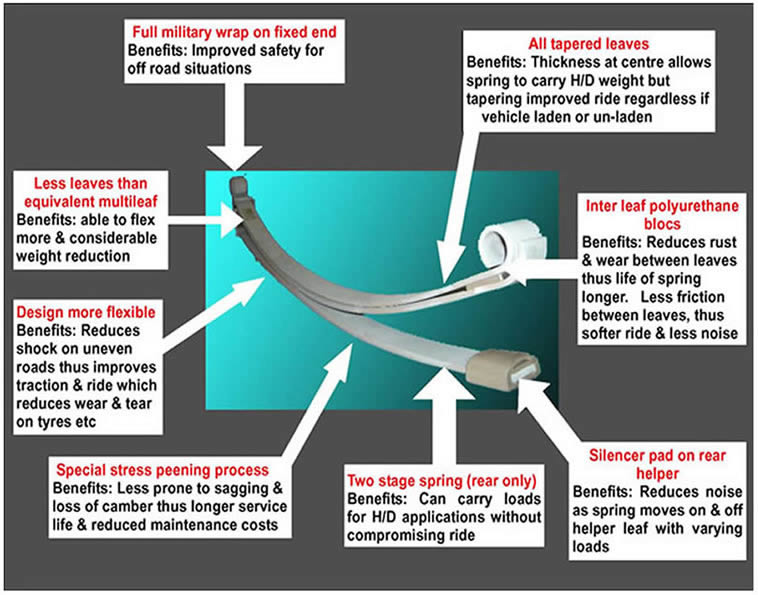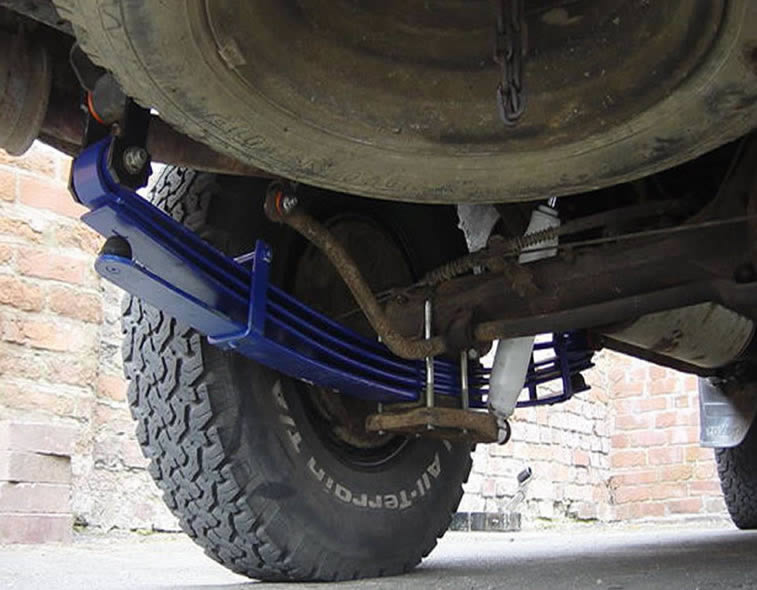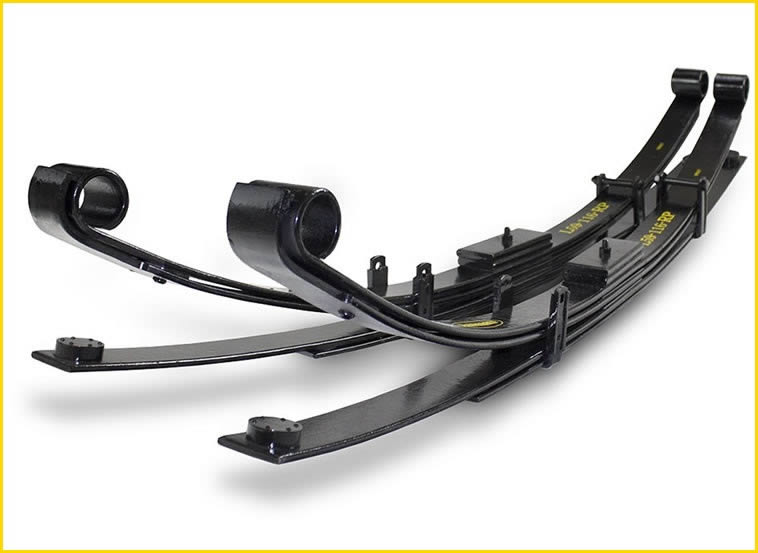Definition
A parabolic spring is one which has the leaves bent into a parabolic rather than elliptical shape. It also has tapered leaves which flex in a manner which distributes the bending stresses evenly along the length of the spring. Parabolic springs typically have fewer leaves than conventional springs and weigh much less thus reducing the unsprung weight of the axles in a vehicle. In our parabolic springs the leaves are separated along their length to reduce friction. The reduction in unsprung weight and friction gives a spring with improved ride quality.
Background
Parabolic springs are leaf springs that consist of two or more leaves that only make contact in the center and at the outer ends. Each leaf in a parabolic springs is tapered to be thicker at the center and slowly thins out towards the ends. This is different from the conventional leaf springs wherein the leaves are in contact with each other and in which each leaf has uniform thickness from end to end. Think of a parabolic spring as an arch that has a taper from the middle to each end. It retains the load carrying ability but when these huge forces are applied (by hitting a bump, or twisting the suspension off road) the parabolic design allows the spring to give a little and reduces shock to the vehicle and the driver.
Purpose
Compared to conventional leaf springs, parabolic springs are able to resist more compression and have better flexibility. The flexibility results to better ride quality. The vertical speed movements are also easier to adjust with these types of springs. Due to the structure and components involved, parabolic springs are also lighter. This is an important factor when the priority is for maximum performance. Another great application for parabolic springs is for off-road vehicles in which the flexibility of the spring is more effective in keeping the wheels always in contact with the ground compared to stiffer conventional springs. The only downside to parabolic springs is that it has lesser capability when it comes to carry heavy loads. As such, these types of springs are used for when comfort is more preferred such as the cases with passenger buses. Only the coil springs are offer more comfortable than parabolic springs. However, coil springs which are often attached only to a single point of the chassis have the disadvantage when it comes to load distribution.
You Should Know
The parabolic design is better able to handle the force distribution from the vehicle to the axle. The parabolic spring is linear in rate while a stock leaf springs are degressive in rate, meaning it can offer load carrying with fewer leafs, where standard leaf spring can not. The parabolic spring design, having fewer leaves, means that interleaf friction is drastically reduced as compared to a standard leaf pack of 7 or more leaves. This allows the spring to compress or extend easier as this friction (resistance) does not need to be overcome to achieve flex; therefore, the ride is more comfortable and off road articulation is improved. This also reduces rust in the parabolic spring pack, a major cause of standard leaf spring failure. As the springs cut down on forces sent into the vehicle, they will actually reduce the noise levels as well! The design of the spring also reduce unsprung weight.




